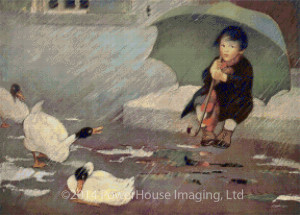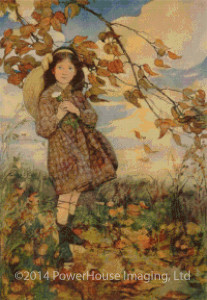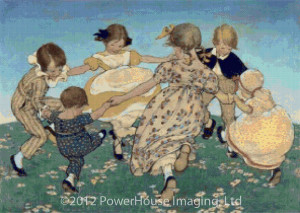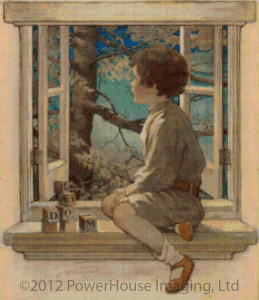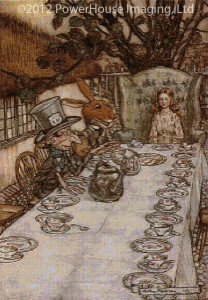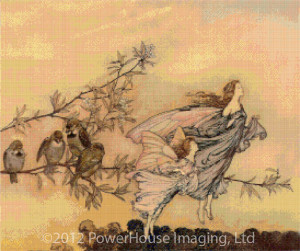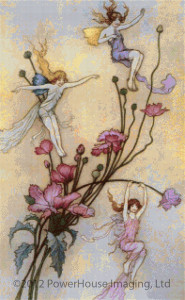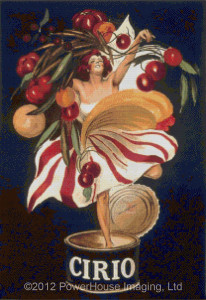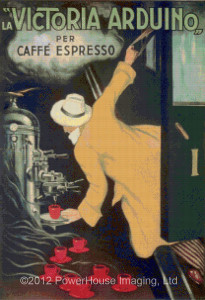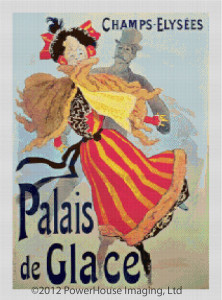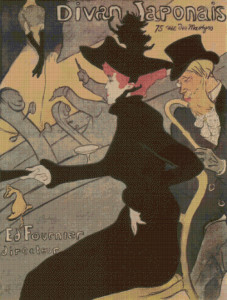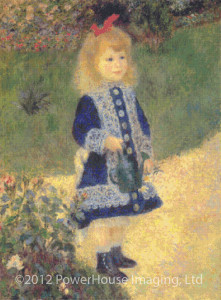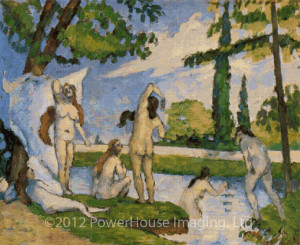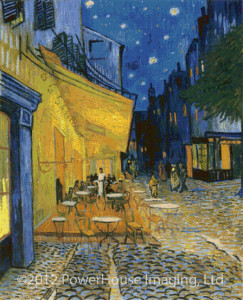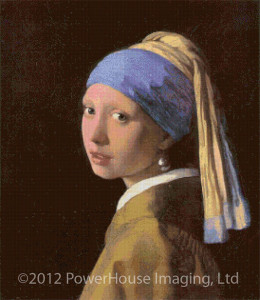What an exciting time this was! The Golden Age of Illustration began in the 1880s and continued until the economic hard times of the 1920s and 1930s brought it to an end.
So, what is the “Golden Age of Illustration?” It is the period of time when the lively American and global economies and cultures demanded grandiose visual materials. The economic good times were the result of the huge post-Civil War economic and global market growth. This generated a proliferation of magazines, newspapers and novels.
However, the Golden Age of Illustration would not have become this explosive were it not for the major advancements that occurred in the sophistication of printing equipment. Prior to 1880, most graphic art in periodicals and posters was reproduced from wood engravings and was printed primarily in black and white. Wood engraving was a highly-skilled art form in itself, but it was an engraver’s interpretation of the artist’s original work.
There were two major developments that totally changed the way printing was done during this period of time and, in turn, triggered the Golden Age of Illustration. First to come was the introduction of photomechanical engraving. Then in the late 1800s, the invention of a four-color process made it possible to make color reproductions in large quantities. By 1900 color printing advanced to a point where artwork was being reproduced on magazine covers and books at a reasonable cost, and the illustration art form was taught in colleges and private schools along with traditional painting and sculpture.
This opened up a whole new world for both illustrators and traditional artists. The illustration artists now had the assurance that the image created would be the one that would be printed. There no longer was the engraver’s interpretation of the artist’s original work.
Illustration artists were in great demand, and this became a boom time for them. Not only were they recognized for their talent, they also benefited greatly in monetary ways.
But most CRUCIAL of all in this period of time was the development of the printing technology. (The technologists who developed this probably did not receive the credit due them, which is unfortunate.) Can you imagine how the illustration artists rejoiced over this advancement! They were now able to create in color and actually have it reproduced as they created it. This technology would have eventually been developed, and many of the illustration artists living then were young enough to benefit. However, many of the “greats” were near the end of their careers, so this came at the perfect time for them . . . and us. Think of what we would have lost had this not happened when it did!
I am thinking of the works of Jessie Willcox Smith, Arthur Rackham, Warwick Goble, Howard Pyle, Edward Penfield, Leonetto Cappiello, Jules Chéret, Henri de Toulouse-Lautrec . . . . . .

